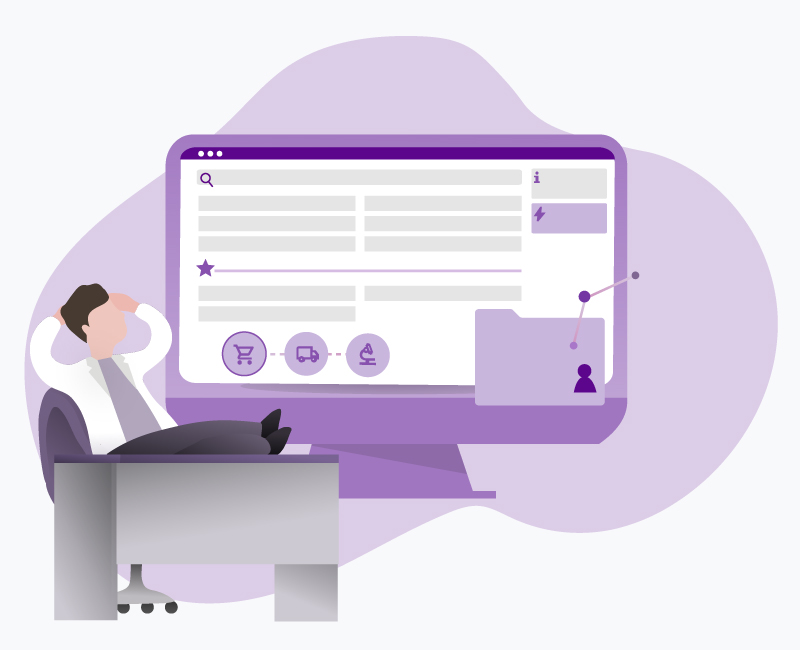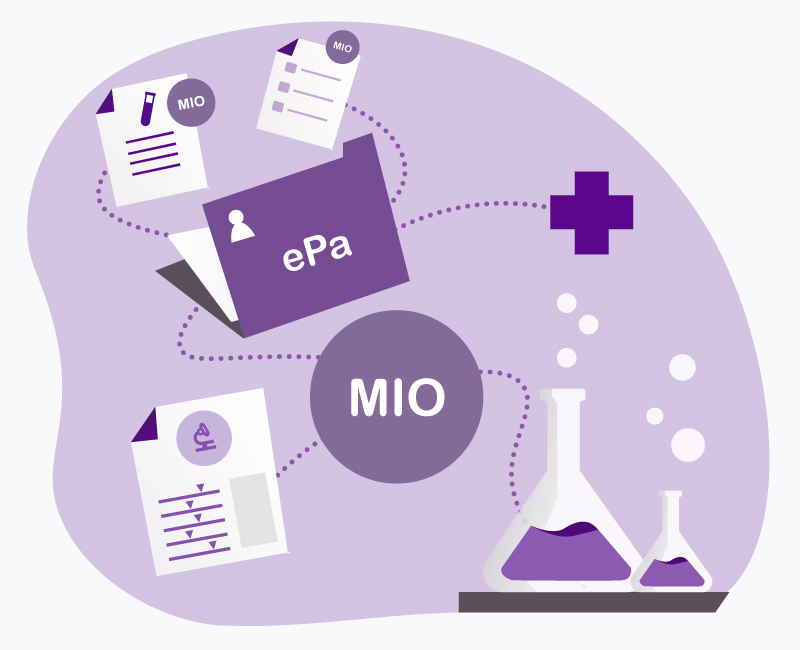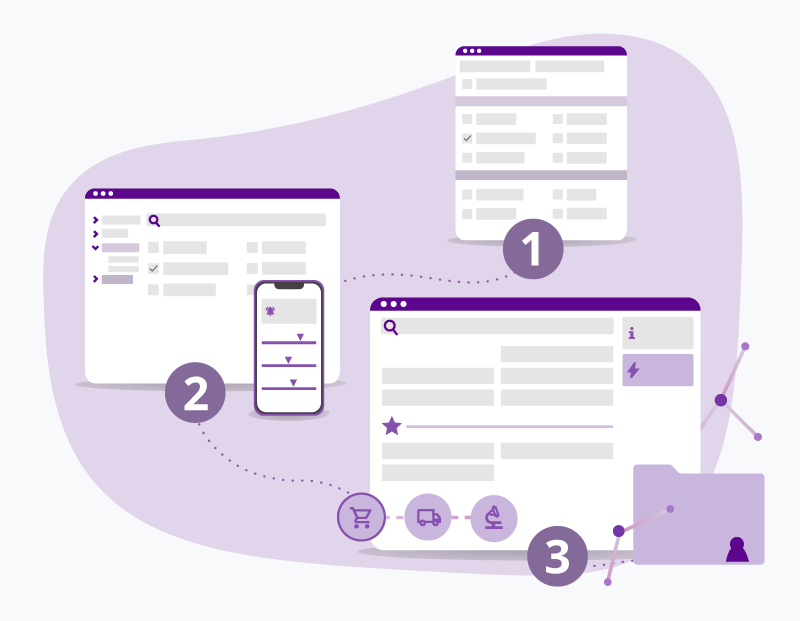Electronic ordering systems allow for a more efficient workflow, freeing up time for essential tasks. This benefits both laboratories and customers, as they gain from a more efficient ordering process, reduced errors, and earlier, more targeted diagnostics.
Challenges in Adopting Ordering Systems
In an average laboratory, 20-35% of orders are still paper-based, due to various factors related to laboratories, software providers, and customers:
Complex integration with PVS: Integrating with the Practice Management System (PVS) is often complex and time-consuming.- Costs in the current distribution model: The prevalent distribution model, where laboratories pay per connected customer, may render the integration of customers with low order volumes not cost-effective. The additional license costs for digital products further complicate the cost issue.
- Low order volume: Some customers see no benefit in using the system if they only have a few orders. The effort of familiarization and integration into the software seems unjustified, especially for small customers who only use a limited selection of standard parameters and prefer the traditional paper form.
- Lack of IT affinity: Approximately 30% of physicians across all specialties are 60 years or older and are often uninterested in adapting to new programs and processes. They continue to prefer paper-based ordering.
Strategies for Simple Ordering Systems
Overcoming the obstacles in implementing and using an electronic ordering system requires a comprehensive strategy consisting of several approaches. Minimal rollout efforts, user-friendliness, training options, and the use of AI and Machine Learning offer various ways to facilitate and optimize the use of ordering systems. The following components are described in detail:
- Minimizing rollout efforts: Thanks to modern software solutions, it is possible to minimize the effort for customer connection and maintenance for both laboratories and customers. For example, remote integration into the PVS minimizes installation efforts. Central customer-specific control (e.g., regarding available profiles, printers, etc.) reduces the effort on the laboratory side.
- Reducing complexity and enhancing user-friendliness: High user-friendliness increases the acceptance of the ordering system. It is essential, especially for small customers with low volume and little parameter variability, that the system is lightweight, while providing more options for customers with complex examination questions. Ultimately, the application should be self-explanatory and ideally integrate existing information (e.g., from the PVS) to avoid duplicate entries and keep the process as streamlined as possible.
- Offering various training options: The use of videos and micro-learning content can reduce training efforts. These should be tailored to the target group and integrated directly into the process to facilitate operation.
- Use of AI and ML: Artificial intelligence and machine learning can be used to provide appropriate suggestions and hints based on past decisions, optimizing the ordering process. This allows the system to adapt to the specific needs of customers, making the digital ordering process increasingly suitable.
- Web-based ordering system: For users without regular or recurring orders, a web portal is useful. For example, this may be relevant for patients as end customers or non-medical industries.
- Providing pre-labeled tubes: The use of pre-labeled tubes reduces effort, especially for customers with low order volumes, and simplifies the ordering process, making the use of a digital ordering system even more attractive.
Simple Ordering Systems for various industries
The benefits of a simple ordering system extend not only to traditional customer groups such as general practitioners or clinics but also to companies in various industries such as butchers and breweries in the field of hygiene.
In addition to an ordering system to support particularly complex customers, medicalvalues offers a lightweight ordering system that can be perfectly adapted to the needs of your customers. The client-based connection minimizes implementation efforts for the customer. This addresses reservations from customers and concerns from laboratories, allowing the electronic ordering system to be seamlessly integrated into everyday (medical practice) life.




